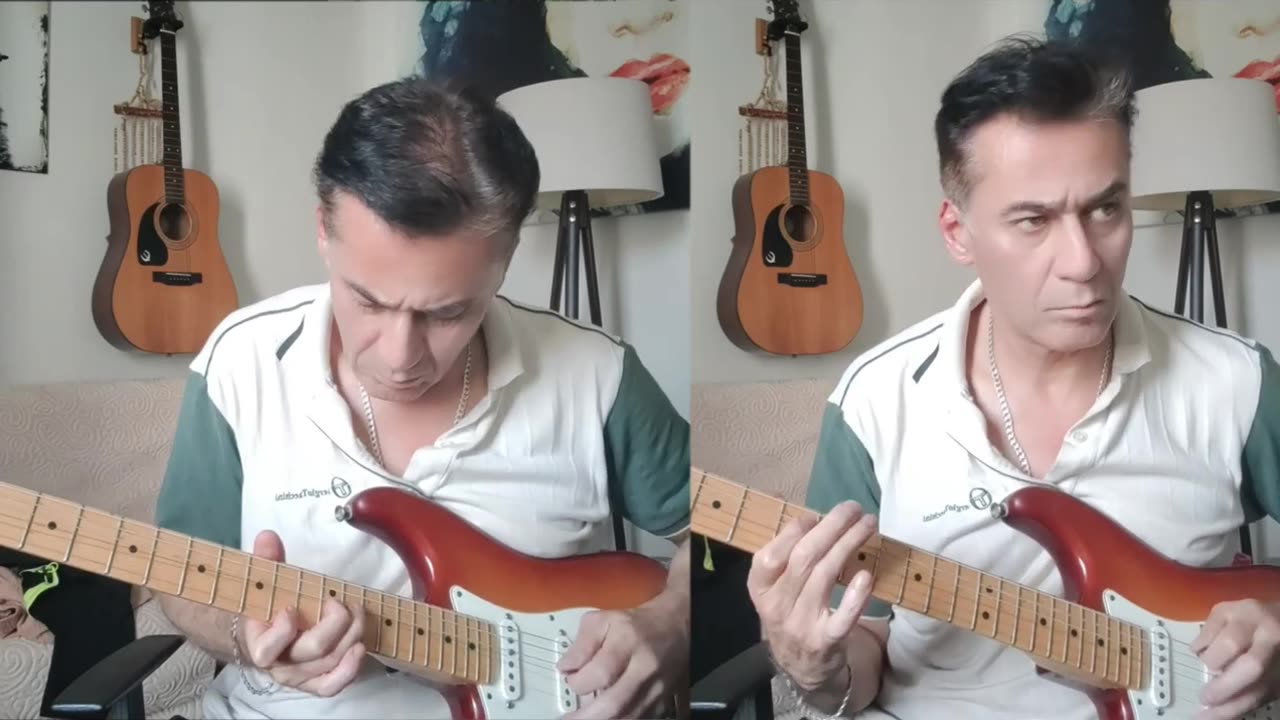Premium Only Content

Techno Trance Guitar Solo 432 Hz
Techno Trance Guitar Solo 432 Hz
Techno Trance is a subgenre of electronic dance music (EDM) that combines elements of techno and trance music. Here are the key characteristics of Techno Trance:
Tempo: Typically ranges from 130 to 150 beats per minute (BPM).
Rhythm: Features a strong, steady 4/4 beat with prominent kick drums.
Synthesizers: Uses both analog and digital synths to create melodic and atmospheric sounds.
Repetitive patterns: Incorporates hypnotic, repeating musical phrases and rhythms.
Build-ups and breakdowns: Includes tension-building sections followed by intense drops or releases.
Minimal vocals: Often instrumental, but may include occasional vocal samples or sparse lyrics.
Energy: High-energy music designed for dancing and club environments.
Production: Heavily relies on electronic production techniques and effects.
Influences: Draws from both the mechanical, industrial sounds of techno and the euphoric, melodic elements of trance.
Atmosphere: Creates an immersive, often psychedelic or futuristic sound environment.
Techno Trance emerged in the 1990s and has since influenced various other EDM subgenres. It's popular in clubs, raves, and electronic music festivals worldwide.
The purported benefits of the 432 Hz frequency are a topic of debate in music and alternative health circles. Here's a brief overview:
Claimed relaxation effects: Some proponents argue that music tuned to 432 Hz is more soothing and relaxing than the standard 440 Hz tuning.
Alleged healing properties: There are claims that 432 Hz resonates with the human body and nature, potentially promoting healing and well-being.
Historical significance: Some believe 432 Hz was used in ancient musical traditions and has a special connection to sacred geometry.
Supposed harmony with nature: Advocates suggest 432 Hz aligns better with natural frequencies found in the universe.
Potential cognitive benefits: Some claim improved focus and mental clarity when listening to 432 Hz music.
It's important to note that these benefits are largely anecdotal and not supported by rigorous scientific evidence. The difference between 432 Hz and the standard 440 Hz tuning is subtle, and many of the claimed effects may be due to personal preference or placebo effects.
Many professional musicians and audio engineers maintain that 440 Hz (the current standard tuning) is preferable for technical and practical reasons in modern music production and performance.
-
 2:13:16
2:13:16
Rotella Games
4 days agoFamily Friendly Saturday Morning Fortnite!
14.7K2 -
 58:32
58:32
Rethinking the Dollar
1 hour agoThe Crisis Within A Crisis: A Recessionary Response Heading Into 2025
3.71K -
 4:45:41
4:45:41
Mesilo
6 hours agoDelta Force - Warfare Leveling
10.7K -
 1:48:32
1:48:32
Game On!
17 hours ago $11.49 earnedExperts DEBATE who will win the 2024 Heisman Trophy!
76.9K7 -
 9:21
9:21
Space Ice
18 hours agoStarship Troopers Proved Once & For All: Violence Solves Everything - Best Movie Ever
26.7K17 -
 21:35
21:35
Goose Pimples
1 day ago7 Ghost Videos SCARIER Than Your Dad’s Dance Moves
16.1K1 -
 6:27
6:27
Dr. Nick Zyrowski
6 hours agoWhat To Eat To Lower Inflammation In Your Body
13.1K4 -
 8:31
8:31
Resist the Mainstream
16 hours agoCollege Student CONFRONTS Charlie Kirk And Gets A Reality Check
20K7 -
 18:05
18:05
Code Blue Cam
1 day agoWhen You’re Too Drunk to Realize You Almost Hit Kamala Harris Head-On
18.4K6 -
 14:18
14:18
IsaacButterfield
1 day ago $1.85 earnedIT’S OVER FOR MEN!
13K7